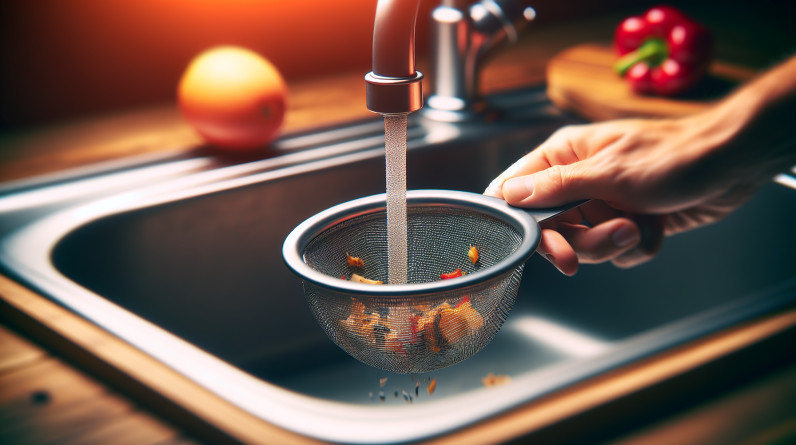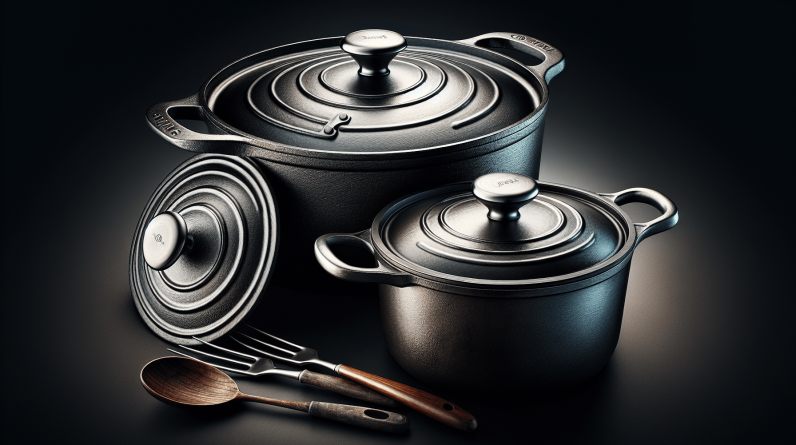When it comes to creating the perfect ambiance in your kitchen, lighting plays a crucial role. But with so many options available, it can be overwhelming to determine which kind of lighting is best suited for your kitchen. From bright task lighting for meal prep to softer, more inviting ambient lighting for entertaining, finding the right balance is key. In this article, we will explore various lighting options that can transform your kitchen into a functional and inviting space, making it the heart of your home.

Overall Kitchen Lighting
When it comes to lighting up your kitchen, it’s important to consider all the different types of lighting available and how they can enhance your space. Good kitchen lighting not only helps with visibility and functionality but also creates an inviting atmosphere. In this comprehensive guide, we will explore various types of lighting, considerations to keep in mind, and the best placement for optimal illumination in your kitchen.
Types of Lighting
Before diving into the specifics, let’s first understand the different types of lighting commonly used in kitchens. The three main types are task lighting, ambient lighting, and accent lighting. Each serves a different purpose and contributes to the overall functionality and aesthetics of your kitchen.
Task Lighting
Task lighting is essential for providing focused and concentrated light for specific work areas in your kitchen. It eliminates shadows and allows you to perform tasks such as chopping vegetables, reading recipes, and preparing meals with precision. Some popular options for task lighting in the kitchen include under-cabinet lighting, overhead lighting, and island lighting.
Under-Cabinet Lighting
Under-cabinet lighting is an excellent choice for illuminating countertops and workspaces. These lights are usually installed underneath the upper cabinets, providing direct light to the area below. LED strip lights or puck lights are commonly used for this purpose, as they are energy-efficient and produce a bright, focused beam of light.
Overhead Lighting
Overhead lighting, often in the form of recessed lights or pendant fixtures, serves as the primary source of illumination in the kitchen. It provides general ambient light that evenly covers the entire space. When selecting overhead lighting, consider the size and layout of your kitchen to ensure adequate coverage and avoid any shadows or dark corners.
Island Lighting
For those fortunate enough to have a kitchen island, it’s a good idea to incorporate specific lighting to enhance its functionality and visual appeal. Pendant lights hung above the island can create a warm and inviting atmosphere, as well as provide ample task lighting for meal preparation and casual dining.
Ambient Lighting
Ambient lighting, also known as general lighting, sets the overall mood and adds a pleasant glow to your kitchen. It fills in the gaps where task lighting may fall short and creates a well-balanced, inviting space. Ceiling fixtures and recessed lighting are popular options for ambient lighting in the kitchen.
Ceiling Fixtures
Ceiling fixtures, such as flush-mount or semi-flush-mount lights, are a classic choice for ambient lighting in the kitchen. They provide a soft, diffused light that evenly illuminates the entire space. Consider the height of your ceiling when selecting a fixture to ensure proper light distribution without overwhelming the room.
Recessed Lighting
Recessed lighting, often referred to as can lights, offers a sleek and contemporary look while providing ample ambient light. These lights are installed into the ceiling, creating a clean, uncluttered appearance. Recessed lights are versatile and can be positioned strategically to enhance specific areas of your kitchen or provide overall coverage.
Accent Lighting
Accent lighting adds character and visual interest to your kitchen by highlighting specific elements or architectural features. It creates a layered lighting effect and adds depth and dimension to the space. Cabinet lighting and wall-mounted fixtures are popular choices for accent lighting.
Cabinet Lighting
Cabinet lighting can be installed both inside and underneath your kitchen cabinets to showcase your beautiful dishes, glassware, or collectibles. LED strip lights or puck lights are commonly used for this purpose, as they provide a warm, inviting glow without generating excessive heat. Cabinet lighting can transform your kitchen into a welcoming and stylish space.
Wall-Mounted Fixtures
Wall-mounted fixtures, such as sconces or picture lights, are an elegant way to add both functional and decorative lighting to your kitchen. They can be positioned near artwork, shelves, or any point of interest, creating a focal point and highlighting the beauty of your kitchen’s design. Wall-mounted fixtures are available in various styles to complement your kitchen’s aesthetic.
Natural Lighting
Harnessing natural light in your kitchen not only reduces your energy consumption but also creates a refreshing and uplifting environment. Windows and skylights are the primary sources of natural lighting in most kitchens.
Windows
Windows are an excellent way to introduce natural light into your kitchen. They not only illuminate the space but also provide views and connect your kitchen to the outside world. If possible, consider adding larger or additional windows to maximize the amount of natural light flowing into the room. Proper window coverings, such as sheer curtains or blinds, can help control the amount of light when needed.
Skylights
Skylights offer another great option for bringing natural light into your kitchen. They are installed in the ceiling and allow sunlight to pour in from above. Skylights can brighten up even the darkest corners of your kitchen, creating a cheerful and vibrant atmosphere.

Light Bulb Types
Selecting the right light bulbs for your kitchen is crucial as it affects both the quality of light and energy efficiency. Here are some commonly used light bulb types to consider:
Incandescent Bulbs
Incandescent bulbs are traditional light bulbs that work by passing an electric current through a wire filament, causing it to glow and emit light. While these bulbs produce a warm and inviting glow, they are not as energy-efficient as other options. They also have a shorter lifespan compared to newer bulb technologies.
Halogen Bulbs
Halogen bulbs are an improved version of incandescent bulbs and are known for their bright, white light. They use a halogen gas-filled capsule instead of a traditional filament, resulting in increased energy efficiency and a longer lifespan. Halogen bulbs are often used for task lighting in the kitchen because of their ability to produce focused and intense light.
Fluorescent Bulbs
Fluorescent bulbs are energy-efficient options that provide a cool, white light. They use an electric current to excite mercury vapor, which then emits ultraviolet light that, in turn, causes the phosphor coating inside the bulb to glow. Fluorescent bulbs are long-lasting and commonly used for overhead and ambient lighting in kitchens.
LED Bulbs
LED (Light Emitting Diode) bulbs have gained popularity in recent years due to their extraordinary energy efficiency and longevity. They produce a wide range of colors, including warm white and cool white, and provide excellent lighting for various kitchen tasks. LED bulbs are an excellent choice for all types of kitchen lighting, as they consume less energy, have a longer lifespan, and emit minimal heat.
Color Temperature
Color temperature refers to the appearance of the light emitted by a bulb. It is measured in Kelvin (K) and can be categorized into three main types – warm white, cool white, and daylight. Understanding color temperature is essential as it affects the mood and ambiance of your kitchen.
Warm White
Warm white light, typically in the range of 2700K to 3000K, produces a cozy and inviting glow. It mimics the warm tones of incandescent bulbs, creating a comfortable and relaxed atmosphere in your kitchen. Warm white light is ideal for ambient and accent lighting, as well as areas where you want to create a warm and cozy ambiance.
Cool White
Cool white light, typically falling between 3500K to 4100K, offers a bright and vibrant illumination. It resembles natural daylight and is often used for task lighting in the kitchen. Cool white light enhances visibility and clarity, making it easier to perform detailed tasks such as food preparation or reading recipes.
Daylight
Daylight, also known as natural light, has a color temperature of 5000K to 6500K. It provides a clean, crisp light that closely resembles daylight streaming in through a window. Daylight bulbs are best suited for spaces where you want to replicate the feeling of natural light, such as near windows or in areas without access to natural lighting.

Dimmer Switches
Adding dimmer switches to your kitchen lighting setup gives you the flexibility to adjust the brightness according to your needs and preferences. Dimmers provide a range of light intensities, allowing you to create different moods and ambiance in your kitchen.
Benefits
Using dimmers in the kitchen offers several advantages. For starters, they allow you to reduce energy consumption by lowering the light output when full brightness is not required. Dimmers also extend the lifespan of your bulbs, as they operate at a lower wattage when dimmed. Additionally, dimmable lighting enables you to set the mood for different occasions – bright and lively during meal preparation, and soft and cozy for a romantic dinner.
Types
There are various types of dimmer switches available, depending on the type of lighting you have installed. The three most common types are rotary, toggle, and slide dimmers. Rotary dimmers have a rotating dial that adjusts the light intensity. Toggle dimmers work similarly to regular light switches, but with the added functionality of dimming capability. Slide dimmers feature a sliding control that allows you to adjust the light level by moving it up or down.
Lighting Control Systems
Taking your kitchen lighting to the next level, lighting control systems offer advanced features and automation options. These systems allow you to control multiple lights simultaneously, set lighting schedules, and even integrate with smart home technology.
Smart Lighting
Smart lighting systems enable you to control your kitchen lights wirelessly through an app on your smartphone or a voice assistant such as Amazon Alexa or Google Assistant. With smart lighting, you can dim, brighten, or even change the color of your lights using voice commands or preset scenes. It adds convenience and flexibility to your kitchen lighting and can be integrated with other smart devices in your home.
Lighting Zones
Dividing your kitchen into different lighting zones allows you to have more control over individual areas and tailor the lighting to specific tasks or moods. For example, you can have one zone for task lighting over the cooking area, another for accent lighting over the cabinets, and a separate zone for ambient lighting in the dining area. Lighting control systems make it easy to set up and manage multiple zones, providing enhanced functionality and personalization.
Motion Sensors
Motion sensors are a practical and energy-efficient addition to your kitchen lighting. These sensors detect movement and automatically turn the lights on or off, depending on occupancy. They are especially useful in areas where hands may be occupied, such as when carrying groceries or working with wet hands. Motion sensors can save energy by ensuring lights are only on when needed and providing hands-free operation, making them a convenient and efficient choice for the kitchen.

Maintenance and Safety
Proper maintenance and safety precautions are necessary to ensure that your kitchen lighting continues to function optimally and safely.
Cleaning
Regularly clean your light fixtures, bulbs, and accessories to remove dust, grease, and other accumulated debris. Turn off the power before cleaning and use a soft, lint-free cloth or a mild cleaning solution to wipe the surfaces. For hard-to-reach areas, consider using an extendable duster or a vacuum attachment. Clean bulbs help improve light output and prevent the buildup of heat, reducing the risk of fire hazards.
Replacing Bulbs
Keep track of the lifespan of your bulbs and replace them as needed. LED bulbs generally have a longer lifespan compared to other types of bulbs, but they will eventually need replacement. Always ensure that the power is switched off before replacing bulbs to prevent electrical accidents. Follow the manufacturer’s instructions and consult an electrician if necessary.
Electrical Safety
Safety should always be a top priority when dealing with kitchen lighting. Ensure that all electrical connections, switches, and fixtures are properly installed and in good working condition. Avoid overloading circuits by distributing the load across multiple electrical outlets. If you have any concerns or if you experience flickering lights, power surges, or other electrical issues, contact a qualified electrician to assess and address the problem.
In conclusion, the selection and placement of kitchen lighting play a crucial role in both the functionality and aesthetics of your culinary space. By considering various types of lighting, understanding color temperature, utilizing dimmer switches or lighting control systems, and practicing proper maintenance and safety measures, you can create a well-lit, inviting kitchen that meets your specific needs and enhances your overall experience in this central gathering place. Remember, a well-lit kitchen is a happy kitchen!










